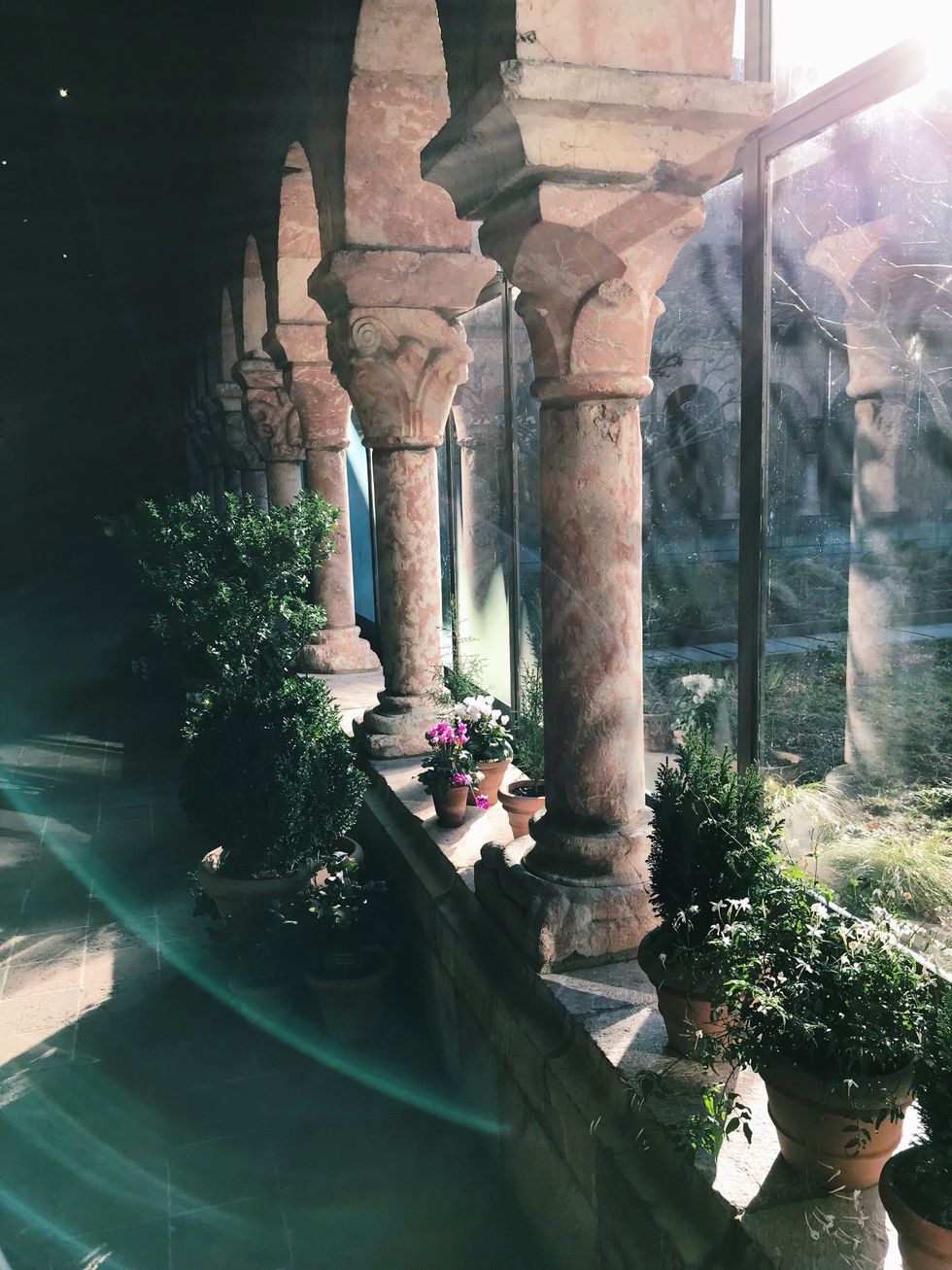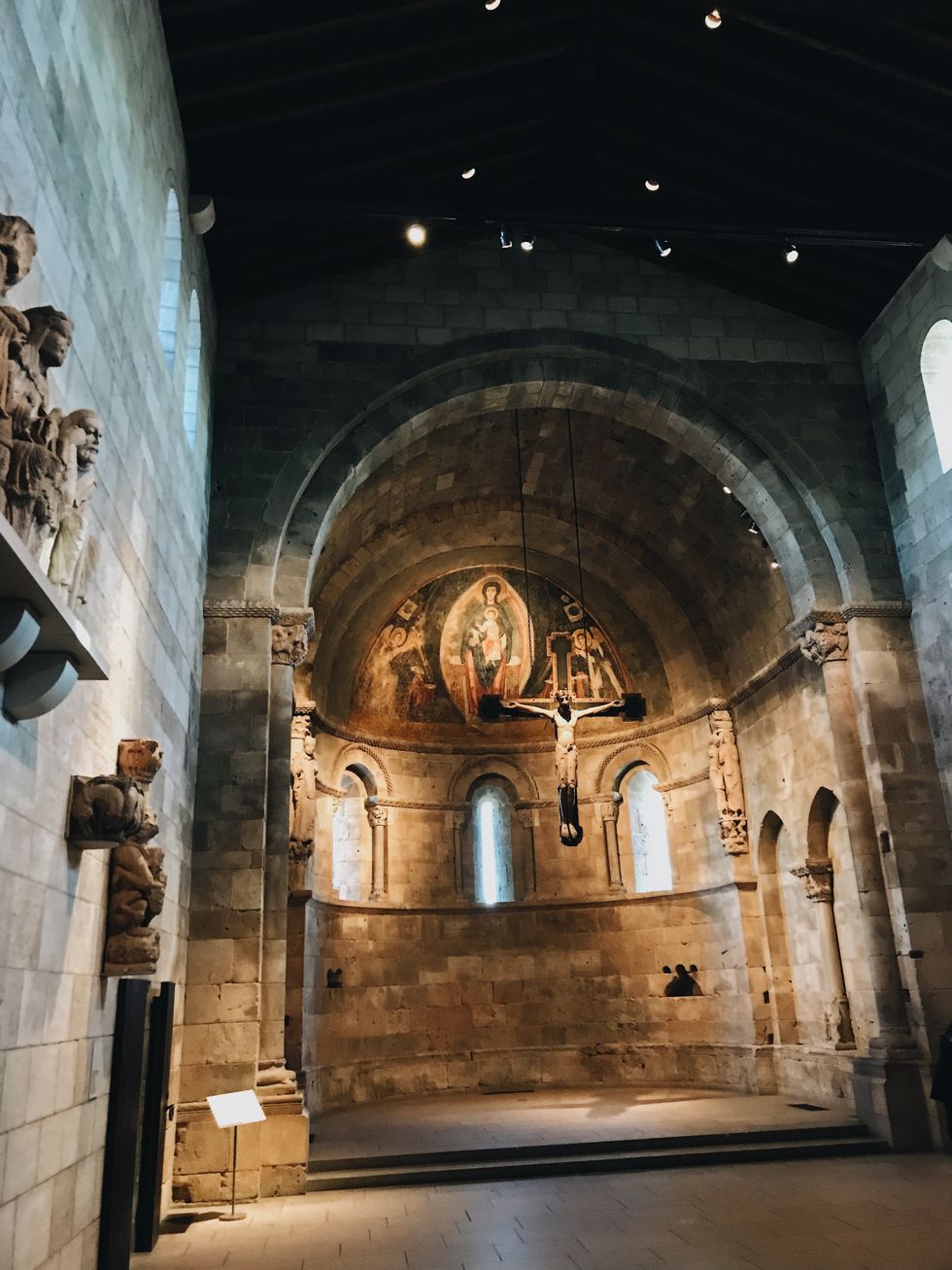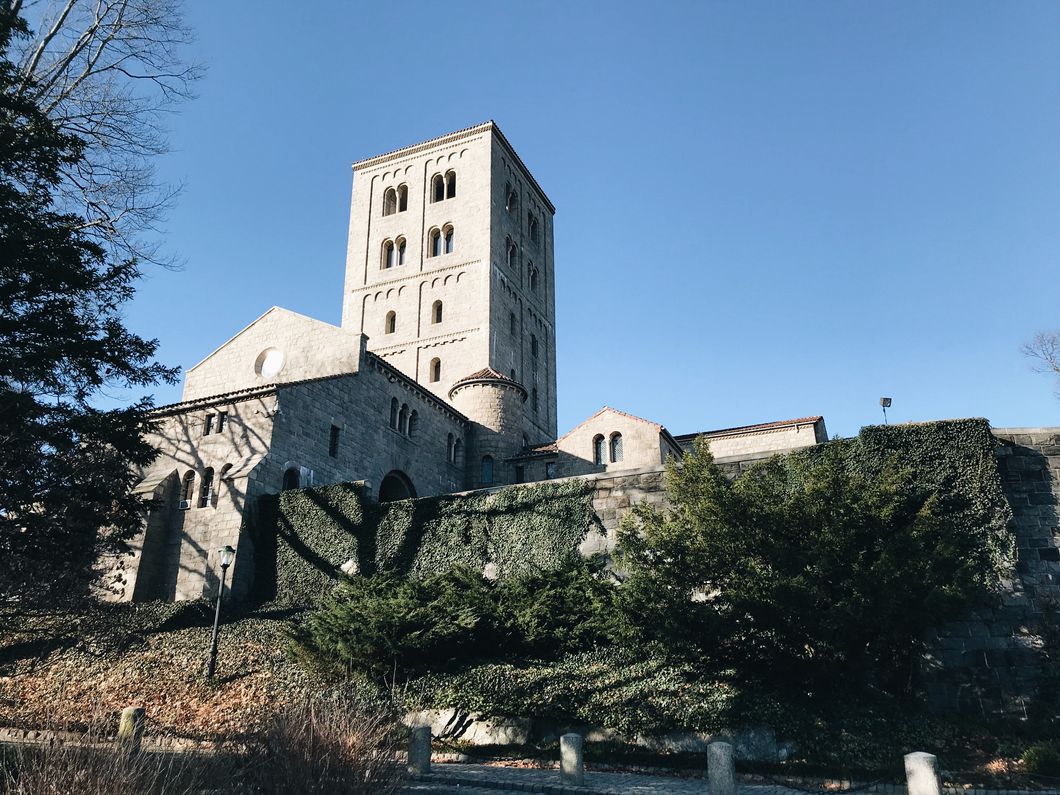Nestled away in Fort Tryon park in northern Manhattan, an escape to a realm of the past overlooks the Hudson river. The Met Cloisters houses the most expansive collection of Medieval art in America, and its chambers provide visitors with a tranquil setting to absorb its rich cultural history. Within the stone structure, museum patrons walk through a secluded passageway and enter into a historical gem home to the masterpieces of the Middle Ages and Northern Renaissance. The Cloisters is a manifestation of the pensive space that once served the monastic community, and it continues to provide the modern viewer with an oasis for serenity and contemplation.
1. A brief history of the Met Cloisters

Christina Giordano
Prominent American sculptor George Grey Barnard (1863-1938) opened a museum on the tip of northern Manhattan to house his collection of medieval art. "George Gray Barnard's Cloisters" was a church-like brick structure that lacked the historical context to properly exhibit the architectural fragments and works of art inside. In 1924 Barnard's Cloisters was put up for sale, and John D. Rockefeller Jr. provided funds that allowed the Metropolitan Museum of Art to purchase the museum and "bring a new level of scholarship and expertise" to the project. The Cloisters boasts works such as Robert Campin's Annunciation Triptych (Merode Altarpiece), the tiny prayer book once owned by the queen of France, the Hours of Jeanne d'Evreux, and the Austrian stained-glass windows from the castle chapel at Ebreichsdorf.
2. What is mindfulness?

Christina Giordano
According to webmd "Being mindful means paying close attention to what's happening at the moment. Put simply, mindfulness is about being present." The Met Cloisters offers an ideal place to practice mindfulness because it is both intellectually stimulating and peacefully relaxing. Its original intention to provide a space for meditation still holds true today, as visitors can be swept back in time to bask in the serenity of a Neo-Gothic setting. An afternoon at the Cloisters is an opportunity to get away from a mundane everyday routine and escape into an idyllic space of beauty, history, and contemplation.
3. Art as a medium for meditation

Christina Giordano
Absorbing the cultural history and underlying meaning of art can illuminate one's perspective. Pondering the works within a museum's collection have the power to enhance focus while educating the viewer. Each image within a display evokes its own story revealed by the artist's intended visual cues. In reflecting on the element of storytelling present within each distinct work, the exploration of art nurtures creativity and recharges the mind.
4. Experience the Met Cloisters

Christina Giordano
On a Spring day, take a trip to the Met Cloisters and admire how the sunlight illuminates the bright colors of stained glass. Relax in the garden and eat at the Trie café. Check out the Met Cloisters website and stick around for an event or guided tour. Live presently within the moment and treat yourself to an experience of learning and tranquility by practicing mindfulness at the museum.

















